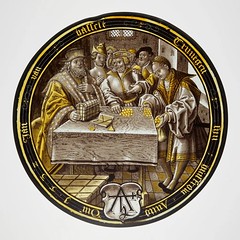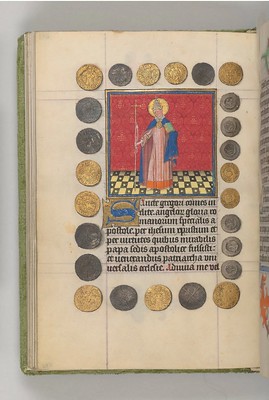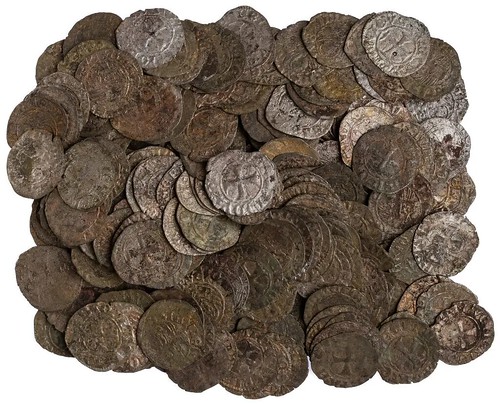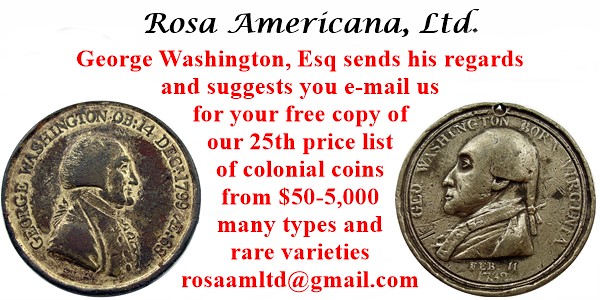
PREV ARTICLE
NEXT ARTICLE
FULL ISSUE
PREV FULL ISSUE
EXHIBIT: MEDIEVAL MONEY AT THE MORGANArthur Shippee passed along this New York Times article about a new exhibit on money opening November 10th at the Morgan Library and Museum. Here's an excerpt - see the complete article online. An article elsewhere in this issue discusses the accompanying book. -Editor
Maybe, maybe not. It looks at the ways that money redefined life, culture and politics in medieval Europe. The sound of money even worked its way into music: A 14th-century madrigal by Lorenzo Masini mimicked clinking coins.
And the themes that took root then are
Simultaneously, the foundations of banks were being laid, and new financial instruments were coming into being that let people pay for merchandise without metal coins. But coins were pervasive, and to show what was in medieval money chests and brass alms boxes, the curators placed a clump of coins as the first item visitors will see.
But as people started making more money in the Middle Ages, it was the spread of low-value coinage that allowed more people — and more classes of people — to participate in the economy. Now there were bankers, money changers, pawnbrokers and traders who reached beyond their immediate surroundings. Financial centers brought in outsiders: Italian merchants who did business at the Beurse, or stock exchange, in Bruges lived in an expatriate community in that Flemish city. And as the new commercial economy spread, people started to worry about the ethical and religious ramifications of getting rich, because wealth seemed to contradict the Christian ideals of poverty and charity.
In a book published to accompany the exhibition, Dr. Wolfthal writes that merchant bankers in the 14th and 15th centuries were
To read the complete article, see:
For more information, see:
Wayne Homren, Editor The Numismatic Bibliomania Society is a non-profit organization promoting numismatic literature. See our web site at coinbooks.org. To submit items for publication in The E-Sylum, write to the Editor at this address: whomren@gmail.com To subscribe go to: https://my.binhost.com/lists/listinfo/esylum All Rights Reserved. NBS Home Page Contact the NBS webmaster 
|




